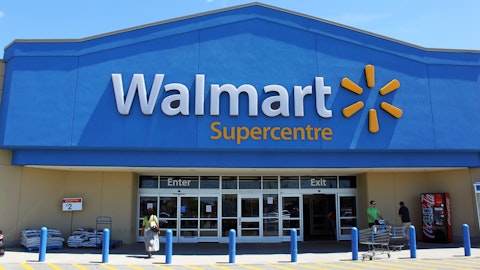James Rhyu: Yeah. I think generally speaking, we did find a sequential improvement that is, I think you’re right, generally speaking Q1 to Q2, in almost every year, we will see a decline. A lot of that happens just because the September period, the end of Q1, we get a little bit of actually a push of enrollments because a lot of families sort of adjust, if you will, what they’re trying to do in September and many of those adjustments sort of come to us. And then you sort of have this tail off in October and November, and then into December. Obviously, we were able to reverse that for this year sequentially, and I think part of it we had strong execution. I think it remains to be seen whether there’s a macro trend here for future years or not.
We definitely see improved execution, so I think that helped contribute to a stronger second quarter. We see funnel metrics like conversion and things like that continue to improve. So — and I think that’s really our execution, which is improving. I think we still have a ways to go to continue improving it, but I just — there’s not enough data that we can see, I think that would suggest that the sequential trend is a macro sort of ongoing tailwind, Q1 to Q2.
Jeff Silber: Okay. That’s helpful. I appreciate it. If I can move on to Career Learning and let me focus on middle high school, although we did see growth on a year-over-year basis, the growth did slow, again, we don’t have a lot of historical data, but I think it’s the first time that we’ve seen single-digit year-over-year growth in that segment, and so it looks like it did slow, can we talk about what was going on there?
James Rhyu: Yeah. I mean, I think what [indiscernible] is single-digit, we’re in the 9% plus range, so like, yes, I mean, single-digit. We’ve got — I think our business are starting to scale. We have a business set now in some respects, it’s the same-store comp because we’re not adding a whole lot of new programs, and I think for the year we’ll probably still be — we’ll still probably average out into a double-digit growth. And so I think for us, I think that’s — if we continue at that sort of low-double digit career growth we’re going be pretty happy. But there’s a little bit of mix — we’re talking on the margin here and the difference between 9% plus and 10% is a few hundred kids or several hundred kids. So we’re talking on the margins here, I think a little bit.
Jeff Silber: Yeah. I was actually referring to revenues, so I know your revenue per student [indiscernible] there so, that’s okay, no worries. But I guess — your answer to that is valid as well. Okay. I’ll jump back in the queue. Thanks so much.
James Rhyu: Thanks.
Operator: [Operator Instructions] Our next question comes from the line of Stephen Sheldon from William Blair. Please go ahead with your question.
Stephen Sheldon: Hey. Thanks for taking my questions, and really nice results here once again. I wanted to start with something that I’ve been getting asked about a lot more from investors, I think I’m sure you guys have too, but what does the opportunity look like to take your Career Learning Solutions into local school districts? I think you’ve highlighted some programs like that before where students take their core classes in-person locally and then take their electives online in your Career Learning programs, do you think this is a larger opportunity for — to pursue in the next few years and what could that mean to your team?
James Rhyu: Yeah. So I think the short answer is, is it a larger opportunity? Yes. I think part of the — part of the issue is going to be just with the way that districts across the country will embrace change. Our strategy I think does present an opportunity to get into those districts with our Career Learning program. We will do it in a multi-pronged way, meaning, one is, we will offer them literally the same program that we give our virtual students, which I think can be compelling for some districts. We will also take a little bit of a platform strategy and offer a sort of — a little bit of a light solution, if you will, through our Tallo platform that will allow for districts to do a little bit more self-serve. It will be a little bit more teacher light.
It will be less sort of instructor-led, etc., but it will still offer them what we think will be a best-in-class platform solution for Career Learning at the high school level. So that is — I mean what probably in a beta phase of that upgrade to our platform, I don’t think just given the selling cycle you’ll see much traction for this coming fall just because the selling season for districts is sort of going to get behind us pretty quickly, but I would expect us to be able to offer it a little bit more robustly in the following fall from a platform perspective. But I think the short answer to your original question, yeah, it does offer a good longer-term opportunity. I just don’t think we’re going to see it in the next 12 months.




